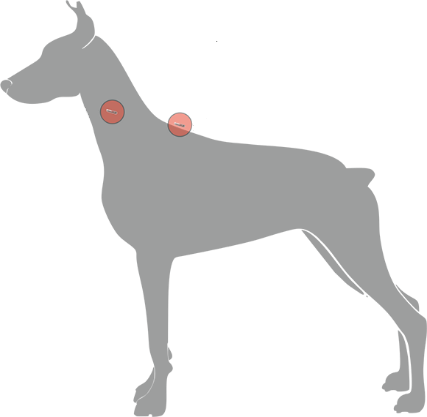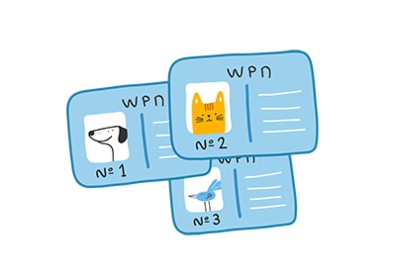A microchip is an integrated circuit with a unique 15-digit number encoded on it. A microchip is a passive device, which means that it does not have its own power source and is activated by radio waves emitted by a compatible reader. A chip is only activated within range of such a reader, and responds by sending its unique number. This feature ensures that a transponder will function at least as long as the life expectancy of the animal it is implanted in.
A chip comes encapsulated in hypoallergenic, biocompatible glass with Parylene C anti-migration coating. The coating also offers protection from the negative effects of natural substances present within an animal's body, which may seep into various micro-cracks and fissures arising as a result of mechanical damage.
- unique microchip number
Every microchip has a unique number that consists of a certain number of digits: the number of digits is 15 for FDX-B chips and 10 for the now-rare FDX-A standard.
All codes follow a set template: the first three digits are a shared code (900) or the manufacturer's code (9XX). The next three digits are either the manufacturer's code or the beginning of the number pool, and the final nine constitute a unique number specific to the microchip.
GENERAL MICROCHIP CODE TEMPLATE:

__ - Shared code (e.g. 900) or manufacturer code (9XX)
__ - Manufacturer's code
__ - Unique microchip number
REMEMBER THAT ONLY AN INDIVIDUAL, UNIQUE MICROCHIP NUMBER CAN HELP IDENTIFY YOUR DOG!
- Microchip for dogs
Depending on the adult size of the animal, one of two microchip sizes can be used:
– Standard transponder – a 12 mm x 2.1 mm microchip for dogs of all races, particularly those whose weight exceeds 5 kg.
– Mini transponder – a 8 mm x 1.4 mm chip primarily for smaller dog breeds whose adult weight does not exceed 5 kg, as well as for other smaller animals such as fish, parrots, ferrets etc.
– Micro transponder – a 7 mm x 1.25 mm
- What is the chipping procedure?
Chipping should be performed by a qualified veterinarian. A transponder is implanted using a sterile injection needle, which is part of the chipping kit. Microchips implanted in dogs are placed under the animal's skin, on the left side of the neck. When performed correctly, chipping is completely safe, painless and over in a matter of seconds. It does not require anaesthesia as even very small and young animals tolerate the procedure. Once implanted, a microchip will accompany your pet throughout its life, making it identifiable and helping it return home if it ever goes missing.
 Dog microchip implantation locations
Dog microchip implantation locations
DO NOT THINK THAT YOUR DOG IS NOT AT RISK OF GOING MISSING AND THEREFORE DOES NOT NEED TO BE REGISTERED!
Microchipped animals go missing every day, with no way to identify them and help find their owner as they are not registered in any database. In order for chipping to be effective, it is necessary to register a chipped pet in a database of electronically marked animals. Without registering, a microchip is only a device with a unique numeric code.
MICROCHIP + REGISTRATION = SAFETY
Remember that a transponder is not a GPS tracking device – it does not emit its own signal and therefore cannot be used to locate your pet!













